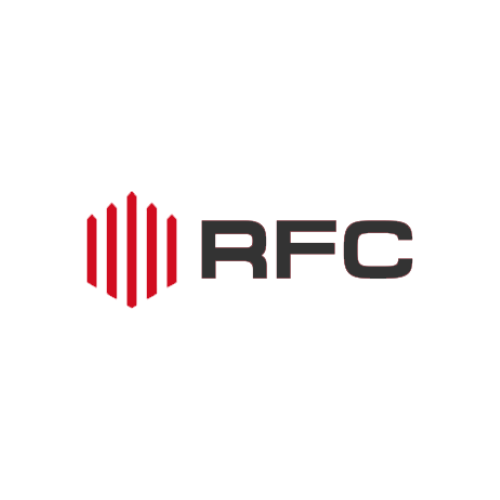Expanding Applications: Drug Eluting Balloons Show Promise in Coronary, Peripheral, and Small Vessel Disease
While initially developed and primarily utilized in coronary interventions, particularly for the treatment of in-stent restenosis, the versatility and "leave nothing behind" approach of drug eluting balloons (DEBs) are leading to expanding applications across a broader spectrum of vascular disease, including peripheral artery disease (PAD) and small vessel interventions. The promising results observed in these diverse settings highlight the potential of DEBs to become a more widely adopted therapeutic modality.
https://www.marketresearchfuture.com/reports/drug-eluting-balloons-market-22171
In coronary artery disease, beyond their established role in treating in-stent restenosis, DEBs are showing promise as a primary treatment strategy for de novo (newly formed) lesions, especially in small vessel disease. The long-term outcomes after stenting small coronary arteries can be less favorable compared to larger vessels, with a higher risk of restenosis. DEBs offer a potential "stentless" approach in these challenging scenarios, delivering an anti-restenotic drug without leaving a permanent metallic scaffold that could further narrow the small lumen or complicate future interventions. Clinical trials are ongoing to further define the optimal role of DEBs in small coronary vessel disease.
The field of peripheral artery disease (PAD) represents another significant area of expanding applications for DEBs. Particularly in the superficial femoral artery (SFA), a common site of atherosclerotic lesions in PAD, DEBs have demonstrated encouraging results in reducing the need for stenting and improving vessel patency after angioplasty. The complex biomechanics of the SFA, with its exposure to bending and torsional forces, can increase the risk of stent fracture and restenosis. The "leave nothing behind" approach of DEBs may be particularly advantageous in this setting. Clinical guidelines are increasingly recognizing the role of DEBs in the treatment of SFA lesions.
Furthermore, DEBs are being explored for the treatment of lesions in other peripheral vascular beds, such as below-the-knee (BTK) arteries in patients with critical limb ischemia (CLI). Treating these small and often heavily calcified vessels remains a significant challenge, and the long-term patency rates after traditional angioplasty and stenting are often suboptimal. DEBs offer a potential alternative to minimize the risk of stent-related complications in these fragile vessels.
The expanding applications of DEBs also extend to the treatment of small vessel disease in other vascular territories beyond the coronary arteries. For instance, DEBs are being investigated for their utility in treating stenotic lesions in renal arteries and infrapopliteal arteries (below the knee). The challenges associated with stenting these smaller vessels, including the risk of restenosis and potential for adverse events, make the "leave nothing behind" approach of DEBs an attractive option.
The ongoing research and clinical trials across these diverse vascular beds are crucial for further defining the optimal indications and treatment algorithms for DEBs. Factors such as lesion morphology, patient comorbidities, and the specific characteristics of the DEB being used (drug coating, balloon design) will likely influence the success of DEB therapy in these expanding applications.
In conclusion, the clinical utility of drug eluting balloons is extending beyond their initial role in coronary interventions. Their promising results in treating lesions in peripheral arteries, including the SFA and BTK vessels, as well as in small vessel disease across various vascular territories, highlight their potential as a valuable tool in the broader management of vascular disease. As further research elucidates the optimal use cases and technological advancements continue to enhance their efficacy, DEBs are poised to play an increasingly significant role in improving outcomes for patients with a wide range of vascular conditions.
Expanding Applications: Drug Eluting Balloons Show Promise in Coronary, Peripheral, and Small Vessel Disease
While initially developed and primarily utilized in coronary interventions, particularly for the treatment of in-stent restenosis, the versatility and "leave nothing behind" approach of drug eluting balloons (DEBs) are leading to expanding applications across a broader spectrum of vascular disease, including peripheral artery disease (PAD) and small vessel interventions. The promising results observed in these diverse settings highlight the potential of DEBs to become a more widely adopted therapeutic modality.
https://www.marketresearchfuture.com/reports/drug-eluting-balloons-market-22171
In coronary artery disease, beyond their established role in treating in-stent restenosis, DEBs are showing promise as a primary treatment strategy for de novo (newly formed) lesions, especially in small vessel disease. The long-term outcomes after stenting small coronary arteries can be less favorable compared to larger vessels, with a higher risk of restenosis. DEBs offer a potential "stentless" approach in these challenging scenarios, delivering an anti-restenotic drug without leaving a permanent metallic scaffold that could further narrow the small lumen or complicate future interventions. Clinical trials are ongoing to further define the optimal role of DEBs in small coronary vessel disease.
The field of peripheral artery disease (PAD) represents another significant area of expanding applications for DEBs. Particularly in the superficial femoral artery (SFA), a common site of atherosclerotic lesions in PAD, DEBs have demonstrated encouraging results in reducing the need for stenting and improving vessel patency after angioplasty. The complex biomechanics of the SFA, with its exposure to bending and torsional forces, can increase the risk of stent fracture and restenosis. The "leave nothing behind" approach of DEBs may be particularly advantageous in this setting. Clinical guidelines are increasingly recognizing the role of DEBs in the treatment of SFA lesions.
Furthermore, DEBs are being explored for the treatment of lesions in other peripheral vascular beds, such as below-the-knee (BTK) arteries in patients with critical limb ischemia (CLI). Treating these small and often heavily calcified vessels remains a significant challenge, and the long-term patency rates after traditional angioplasty and stenting are often suboptimal. DEBs offer a potential alternative to minimize the risk of stent-related complications in these fragile vessels.
The expanding applications of DEBs also extend to the treatment of small vessel disease in other vascular territories beyond the coronary arteries. For instance, DEBs are being investigated for their utility in treating stenotic lesions in renal arteries and infrapopliteal arteries (below the knee). The challenges associated with stenting these smaller vessels, including the risk of restenosis and potential for adverse events, make the "leave nothing behind" approach of DEBs an attractive option.
The ongoing research and clinical trials across these diverse vascular beds are crucial for further defining the optimal indications and treatment algorithms for DEBs. Factors such as lesion morphology, patient comorbidities, and the specific characteristics of the DEB being used (drug coating, balloon design) will likely influence the success of DEB therapy in these expanding applications.
In conclusion, the clinical utility of drug eluting balloons is extending beyond their initial role in coronary interventions. Their promising results in treating lesions in peripheral arteries, including the SFA and BTK vessels, as well as in small vessel disease across various vascular territories, highlight their potential as a valuable tool in the broader management of vascular disease. As further research elucidates the optimal use cases and technological advancements continue to enhance their efficacy, DEBs are poised to play an increasingly significant role in improving outcomes for patients with a wide range of vascular conditions.





